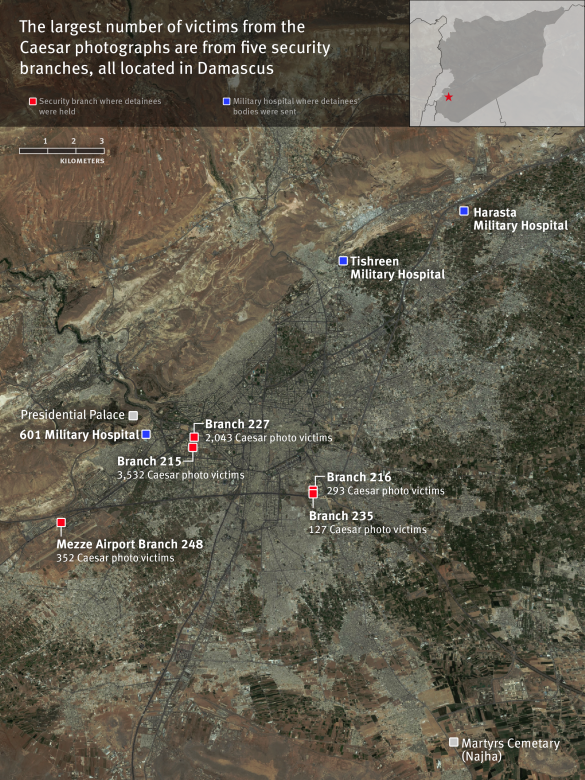By Human Rights Watch | – –
"If the Dead Could Speak" reveals some of the human stories behind the more than 28,000 photos of deaths in government custody that were smuggled out of Syria and first came to public attention in January 2014.
“Just about every detainee in these photographs was someone’s beloved child, husband, father, or friend, and his friends and family spent months or years searching for him,” said Nadim Houry, deputy Middle East director at Human Rights Watch. “We have meticulously verified dozens of stories, and we are confident the Caesar photographs present authentic – and damning – evidence of crimes against humanity in Syria.”
Countries meeting about possible peace negotiations in Syria – including Russia, as the Syrian government’s biggest backer – should make the fate of the thousands of detained people in Syria a priority, Human Rights Watch said. Concerned countries should insist that the Syrian government give international monitors immediate access to all detention centers and that Syria’s intelligence services must stop forcibly disappearing and torturing detainees.
Meet the doctor who saw the horrors of the Caesar Photos first-hand in Syria. >>
In August 2013, a military defector code-named Caesar smuggled 53,275 photographs out of Syria. Human Rights Watch received the full set of images from the Syrian National Movement, a Syrian anti-government political group that received them from Caesar. The report focuses on 28,707 of the photographs that, based on all available information, show at least 6,786 detainees who died in detention or after being transferred from detention to a military hospital. The remaining photographs are of attack sites or of bodies identified by name as of government soldiers, other armed fighters, or civilians killed in attacks, explosions, or assassination attempts.
© 2015 Human Rights Watch







 © 2025 All Rights Reserved
© 2025 All Rights Reserved